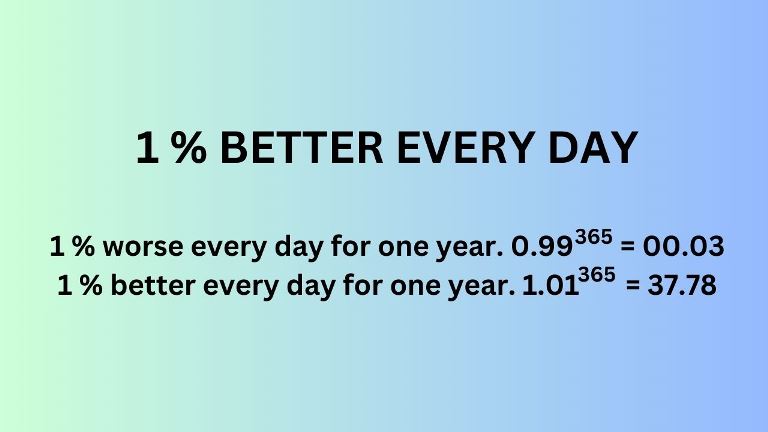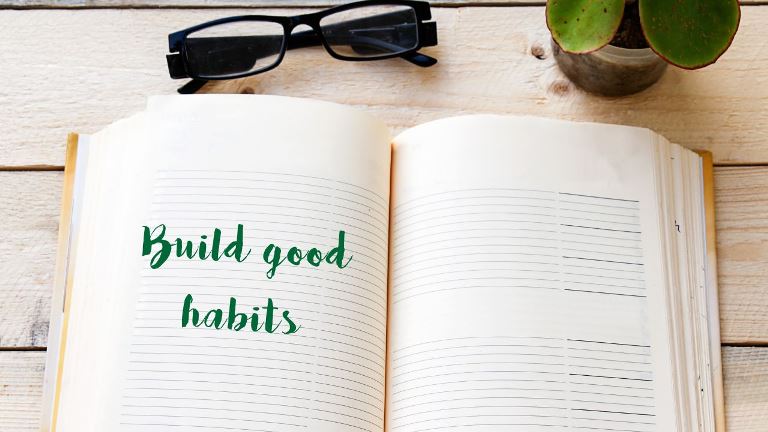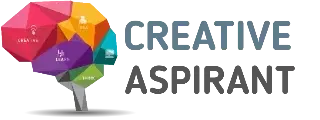As we all know, habits shape our lives, determining our successes and failures.
But how can you make good habits?
This book provides powerful and clear steps to build positive habits and break negative ones. It outlines how to use cues, cravings, responses, and rewards to design successful systems.
This blog will provide a chapter-by-chapter summary of Atomic Habits and show you how small changes can lead to great results.
Learn the secrets of habit formation and how to make positive change effortless.

- Chapter 1: The Surprising Power Of Atomic Habits
- Compounding Habits
- Chapter 2: How Your Habits Shape Your Identity (and Vice Versa)
- Chapter 3: How To Build Better Habits In 4 Simple Steps
- Chapter 4: The Man Who Didn’t Look Right
- Chapter 5: The Best Way To Start A New Habit
- Chapter 6: Motivation Is Overrated; Environment Often Matters More
- Chapter 7: The Secret To Self-Control
- Chapter 8: How To Make A Habit Irresistible
- Chapter 9: The Role Of Family And Friends In Shaping Your Habits
- Chapter 10: How To Find And Fix The Cause Of Your Bad Habits
- Chapter 11: Walk Slowly, But Never Backward
- Chapter 12: The Law Of Least Effort
- Chapter 13: How To Stop Procrastinating By Using The Two-Minute Rule
- Chapter 14: How To Make Good Habits Inevitable And Bad Habits Impossible
- Chapter 15: The Cardinal Rule Of Behavior Change
- Chapter 16: How To Stick With Good Habits Every Day
- Chapter 17: How An Accountability Partner Changes Everything
- Chapter 18: The Truth About Talent (When Genes Matter and When They Don’t)
- Chapter 19: The Goldilocks Rule—How to Stay Motivated in Life and Work
- Chapter 20: The Downside Of Creating Good Habits
- Recommended Reading
Chapter 1: The Surprising Power Of Atomic Habits
Do you know, if you get 1% better each day for 1 year, you can improve by 37.78 times a year. You might think that this is just a small improvement, but it is more important eventually than achieving 100%.
You can understand it through an example: Britain’s cycling team. Everything changed in 2003 when the governing body of Britain hired Dave Brailsford as the team’s new performance director. It’s because Great Britain has not been able to achieve any success in the past year. They even did the worst in Tour de France.
Due to their poor performance, one of the top bike manufacturing company refused to sell their bikes to the team. They feared their reputation and sales would drop if others saw Britain’s cycling team purchasing the bike.
But later, that team became the one to change Britain’s cycling history forever; what do you think would have happened so that they achieved such huge success?
When Brailsford joined the cycling team, he made several small improvements, such as:
- Redesigning the seats of bicycles to make them more comfortable.
- He rubbed alcohol on the tire for a better grip.
- Riders wear electrically heated shorts to keep their muscles warm while riding.
- The team tested various fabrics so that they could achieve the one that is lighter and more aerodynamic.
- They tested massage gel, better mattresses, and better health & hygiene to keep the riders fit and healthy.
Every day, they improved by 1%. Finally, they achieved the 2008 Olympic Games in Beijing and the Olympic Games of London, and they also set nine Olympic records and seven world records.

Compounding Habits
A small change in routines can change your life for the better. Habits are the compound interest of self-improvement. In the same way, the money multiplies through compound interest. Success is the result of daily habits, not a one-time transformation.
Your habits have a significant impact, both positively and negatively. Your habits can compound for you or against you.
Positive Compounding
- Productivity Compounds: The effect of automating a task or learning a new skill can be even greater. The more tasks you can handle without thinking, the more free your brain will be to focus on other areas.
- Knowledge Compounds: Learning a few new things won’t make you a genius, but sticking with it for a lifetime can really change your life.
- Relationships Compounds: People reflect your behavior back to you. The more you help people, the more they want to help you.
Negative Compounding
- Stress Compounds: The frustration of a traffic jam. The burden of parenting responsibilities and the concern of making ends meet. High blood pressure is a strain, but when it persists for long years, little stress compounds a serious health issue.
- Negative Thought Compounds: The more you think negatively about yourself, like I am ugly and stupid, the more you lose your confidence. And you will get trapped in a thought loop. The same is true for how you think about others.
- Outrage Compounds: Riots, protests, and mass movements are rarely the result of one event. Instead, many microaggressions and daily aggravations gradually multiply until one recent incident tips the scales, and outrage spreads like wildfire.
Chapter 2: How Your Habits Shape Your Identity (and Vice Versa)
Occasionally, it doesn’t feel easy to keep good habits going for more than a few days, even with sincere effort. It can be difficult to break unhealthy habits like eating junk food, watching too much television, procrastinating, and smoking.
Changes in our habits are challenging in two ways:
- We try to change the wrong things.
- We try to change our habits in the wrong way.
Change comprises three layers: outcome, process, and identity. The best way to change your habits is to focus on who you want to become instead of what you want. Improvements are only temporary until they become part of who you are.
Example: The goal is not to read the book, the goal is to become a reader.
The more you do the same thing, the stronger your identity becomes.
- When you make your bed every day, it shows that you’re organized.
- If you go to church every Sunday for twenty years, you have evidence that you are religious.
Chapter 3: How To Build Better Habits In 4 Simple Steps
As we discussed in the last chapter, a habit is something you do repeatedly and becomes automatic. The process has been with trial and error. Habit’s ultimate purpose is to solve life’s problems with as little energy as possible.
The process of building a habit can be divided into four simple steps: Cue, craving, response, and rewards. Every habit starts with these four steps; your brain accepts them similarly.
When you want to leave any habit, the same opposite rule applies. Eliminate the cue, and your habit will never start. Let’s learn how to break bad habits in four simple steps:
- 1st law (Cue): Make it invisible.
- 2nd law (Craving): Make it unattractive.
- 3rd law (Response): Make it Difficult.
- 4th Law (Reward): Make it unsatisfying.
Reduce the craving, and you won’t experience enough motivation to act. Make the behavior difficult, and you won’t be able to do it. And if the reward fails to satisfy your desire, you’ll have no reason to do it again. Without the first three steps, a behavior will never happen. Without all four, a behavior will not be repeated.

Chapter 4: The Man Who Didn’t Look Right
The human brain is like a machine that predicts things. It keeps learning by looking at what’s around you.
We have to understand how our bodies and brains work without us thinking. Some body parts work automatically, such as growing hair and nails, the heart, and lungs.
Pointing and calling are great ways to raise your level of awareness from a non-conscious habit to a more conscious level by verbalizing your actions.
What is Pointing and Calling?
Make small, easy habits that lead to significant changes later. Pointing and calling can make a huge difference.
- Attention Booster: It forces you to focus on one task at a time, preventing distractions and silly mistakes
- Error Catcher: Saying things out loud helps your brain catch problems you might miss just by looking.
- Habit Builder: Doing this repeatedly makes it automatic, so you become super accurate over time.
Example: Getting Ready for School Super Smoothly
- Point to your backpack. Call: “Backpack – got it!”
- Point to your pencil case. Call: “Pencils and pens – check!”
- Point to your lunch box. Call: “Healthy lunch – ready!”
Chapter 5: The Best Way To Start A New Habit
The first Law of changing behavior is to make it easy and obvious to understand. Plan and set a specific time and place for the new habit to achieve this.
The two most common cues are time and location. You can use habit stacking to pair a new habit with a current habit. Habit stacing formula is : After (CURRENT HABIT), I will (NEW HABIT). Habit stacking might look like this:
- After pouring my morning cup of coffee, I meditate for sixty seconds.
- After meditating for sixty seconds, I will write my to-do list for the day.
- After I write my to-do list for the day, I will begin my first task.
The implementation formula is : I will (BEHAVIOR) at (TIME) in (LOCATION).
- Studying: I will study for twenty minutes at 6 p.m. in my bedroom.
- Marriage: I will make my partner a cup of tea at 8 a.m. in the kitchen.
Chapter 6: Motivation Is Overrated; Environment Often Matters More
The environment is an invisible force that influences human behavior. Even though we all have unique personalities, certain behaviors tend to appear repeatedly under certain conditions.
Like in church, people tend to talk in whispers. When it’s dark outside, people are cautious and watchful. This approach ensures that the most common change is not internal, but external: we are changing the world around us.
- How can you change the environment for success?
Every habit has a cue that tells us to do something, and we are more likely to notice cues that stand out. Unfortunately, the environments where we live and work often make it easy not to do a certain action because there is no obvious cue to trigger behavior. Let’s understand by an example :
In the 1990s, the people who cleaned at Schiphol Airport in Amsterdam put a small sticker that looked like a fly near the center of each urinal. When men stepped up to the urinal, they aimed for what they thought was a bug. But the sticker helped them aim and reduce spillage around the urinal. After analysis, it has been found that it can reduce the cost of cleaning by 8 percent each year.
Small changes in context can lead to large changes in behavior.

Chapter 7: The Secret To Self-Control
Self-control is a short-term strategy, not a long term. People with high levels of self-control tend to avoid tempting situations. Avoiding temptation is easier than resisting it. Once the habit is formed, it is unlikely to be forgotten. One of the most practical ways to eliminate a bad habit is to reduce exposure to the cue that causes it.
- If you constantly feel inadequate, stop following social media accounts that cause jealousy and envy.
- If you watch television too much, please move the television out of the bedroom.
- If you cannot complete your task, please leave your phone in another room for a few hours.
Chapter 8: How To Make A Habit Irresistible
The 2nd Law of Behavior Change is making it attractive. More attractive opportunities are more likely to become habit-forming.
- How can we use temptation-building to make our habits more attractive?
Ronan Byrne, a student pursuing an electrical engineering degree, discovered himself browsing Netflix; however, he knew he should engage in physical activity.
He utilized his expertise in engineering to establish a connection between his laptop and television via his stationary bicycle. Byrne programmed his computer to allow Netflix to run only if he was cycling at a certain speed. If he slowed down for too long, the show he watched would stop until he started again.
One fan said he was “eliminating obesity one Netflix at a time.”
Chapter 9: The Role Of Family And Friends In Shaping Your Habits
True or False: Your friends and family have absolutely no effect on your habits. (Answer: False)
The Polgars were the parents of three young girls: Susan, Sofia, and Judit. When Susan was four years old, she got into chess. Within six months, she was defeating adults.
Sofia, the middle child, excelled even more, becoming a world champion at the age of fourteen and, within a few years, a grandmaster. Judi, who was the smallest, was the best. She could beat her father at five years old. In an interview, they reveal that their childhood was entertaining, then grueling. They love playing chess.
Laszlo once saw Sofia playing chess in the bathroom at night. He encouraged her to go back to sleep and said, “Sofia, leave the pieces alone. To which she replied, Daddy, they won’t leave me alone.
The Polgar sisters grew up in a family that valued chess more than anything else and praised and rewarded them for it.

Chapter 10: How To Find And Fix The Cause Of Your Bad Habits
The inversion of the 2nd Law of Behavior change is make it unattractive. The cause of your habit is actually the prediction that precedes them, The prediction leads to a feeling. Every behavior has a surface desire and a deeper motive.
- How to program your brain to enjoy hard habits?
You can make a hard habit more attractive if you can learn to associate it with a positive experience. A slight mindset shift is sometimes all you need. For instance, we frequently discuss the tasks that must be accomplished within a given day. You have to wake up early for work. You have to cook dinner for your family.
Imagine changing just one word: you don’t “have” to. You “get” to. You get to cook dinner for your family, and you get to cook dinner for your family. By changing one word, you shift how you view each event.
Habits are attractive when we associate them with positive feelings, and unattractive when we associate them with negative feelings.
Chapter 11: Walk Slowly, But Never Backward
- “How long does it take to build a new habit ?”
But what people should really be asking is, “How many steps does it take to form a habit?” That is how many repetitions are required to make a habit automatic.
It doesn’t matter whether it takes twenty-one days or thirty days. What’s important is how quickly you do what you say. To develop a routine, you must engage in routine activities and keep in mind the following guidelines.
- It’s the frequency that matters because new habits need the same level of frequency.
- The 3rd Law of Behavior change is to make it easy.
- Practice, not planning, is the most effective method of learning.
- Focus on taking action instead of being in motion.
- Habit formation is when doing something repeatedly becomes more and more automatic.
Chapter 12: The Law Of Least Effort
The Law of least effort is applied to human behavior. We will naturally choose the option that requires less work rather than one that requires more work.
Create an environment where doing the right thing is as easy as possible. Prime your environment to make future actions easier.
- Want to improve your diet?
Please take a few fruits and vegetables on the weekend and pack them in containers to have a healthy, ready-to-eat option during the week.
- Would you like to exercise?
Set your workout clothes, shoes, gym bag, and water bottle ahead of time.
Reduce the friction associated with good behaviors. When friction is low, habits are easy. Obey the opposite rule of the bad habits you would rather not create in your life.

Chapter 13: How To Stop Procrastinating By Using The Two-Minute Rule
The Two-Minute Rule states that initiating a new habit should take less than two minutes. If you want to develop a new habit, start by taking small and easy steps, and eventually, you’ll develop a solid routine with simple and easy steps.
You will find that nearly any habit can be scaled down into a two-minute version:
- “Read before bed each night” becomes “Read one page.”
- “Do thirty minutes of Yoga” Take out your yoga mat.”
- “Run three miles” becomes ” Tie my running shoes.”
Chapter 14: How To Make Good Habits Inevitable And Bad Habits Impossible
The version of the 3rd Law of Behavior Change makes it difficult.
There are many ways to automate good habit and eliminate bad ones, we can use technology to work for us. Technology can transform once hard actions; now it’s easy and , painless, and simple. It is an effective and reliable way to correct behavior.
- Personal finance: Employees can save for retirement with an automatic wage deduction.
- Productivity: Social media browsing can be cut off with a website blocker.
A commitment device is a decision you make in the present that locks in better behavior in the future. The ultimate way to lock in future behavior is to automate your habits.
Chapter 15: The Cardinal Rule Of Behavior Change
The 4th Law of Behavior Change is to make it satisfying. We are more likely to repeat a behavior when we feel satisfied.
The human brain evolved to prioritize immediate rewards, which is satisfying.
- How do you turn instant gratification to your advantage?
In the perfect world, the reward for good habits is the habit itself. You may not be as strong or quick when joining a gym. But after a few months, when your body gets more energetic, and you shed a few pounds, or your arms get a little bigger, it becomes easier to work out for fun. At the beginning, you will need motivation to stay on track.
Chapter 16: How To Stick With Good Habits Every Day
One of the most satisfying feelings is the feeling of making progress. A habit trader is a simple way to measure where you made a habit, like marking an X on a calendar.
Habit trackers and other visual measurement forms can satisfy your habit by providing clear evidence of your progress.
- Keep your habit streak alive by not breaking the chain.
- If you miss one day, try to get back on track quickly and easily.
- Just because you can measure something doesn’t make it the most important thing.
Chapter 17: How An Accountability Partner Changes Everything
- How a Habit Contract?
The first seat belt was passed in New York on December 1, 1984. At that time, only 14% of people used seat belts, and within five years, over half of the nation was forced to have seat belt laws.
In 2016, 88 percent of Americans buckled up every time they got in the car. There was a complete reversal in the habits of millions of people in just thirty years.
Laws and regulations are examples of how the government can change our habits by creating a social contract. As a society, we are collectively responsible for adhering to certain rules.
Chapter 18: The Truth About Talent (When Genes Matter and When They Don’t)
- How to find a game where the odds are in your favor?
Learning to play a game where the odds are in your favor is critical for maintaining and feeling successful.
In this theory, you can enjoy almost everything. Talented people in a particular area tend to be more competent at that task and are then praised for doing a good job. They get rewarded with better pay and bigger opportunities, which makes them happier and produces even better quality work. They stay energized because they are making progress.
Progress is easy when you choose the right habit. If you decide on the wrong habits, life will be difficult.

Chapter 19: The Goldilocks Rule—How to Stay Motivated in Life and Work
The Goldilocks Rules state that humans experience peak motivation when working on tasks that are on the edge of their current abilities.
- The biggest failure is not failure but boredom.
- Once something becomes routine, it becomes boring and doesn’t make us feel happy. We get bored.
- Professionals stick to the schedule: mature life gets in the way.
- People who are motivated can work hard.
Chapter 20: The Downside Of Creating Good Habits
- The advantage of habit is that it allows us to do things without thinking.
- The problem is that we stop paying attention to small mistakes.
- Reflection and review is a process that allows you to remain conscious of your performance over time.
- Habits +Deliberate Practice+Mastery
- The more we hold on to an identity, the harder it is to grow.
Recommended Reading
If you like Atomic Habits, you may also enjoy the following books:
